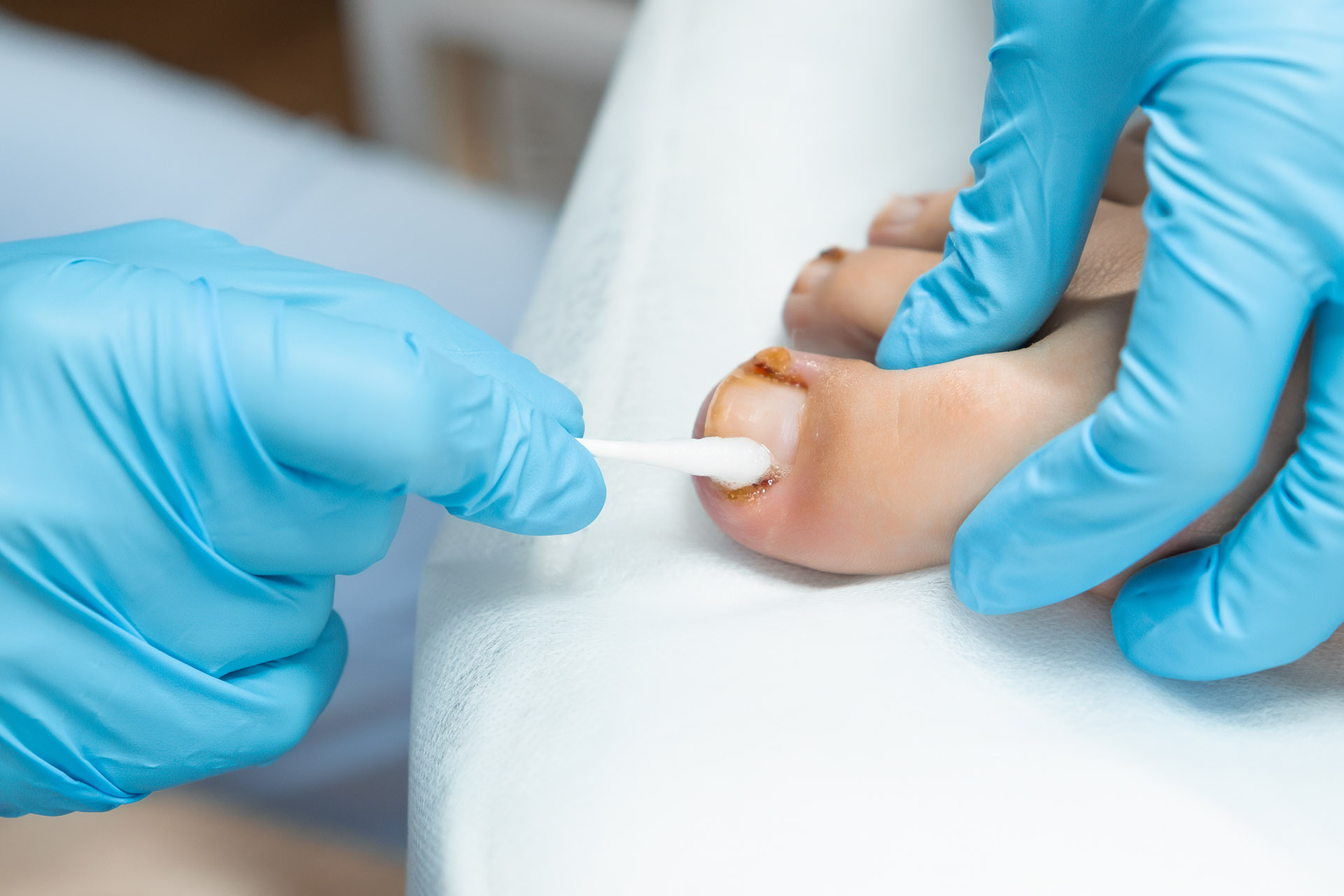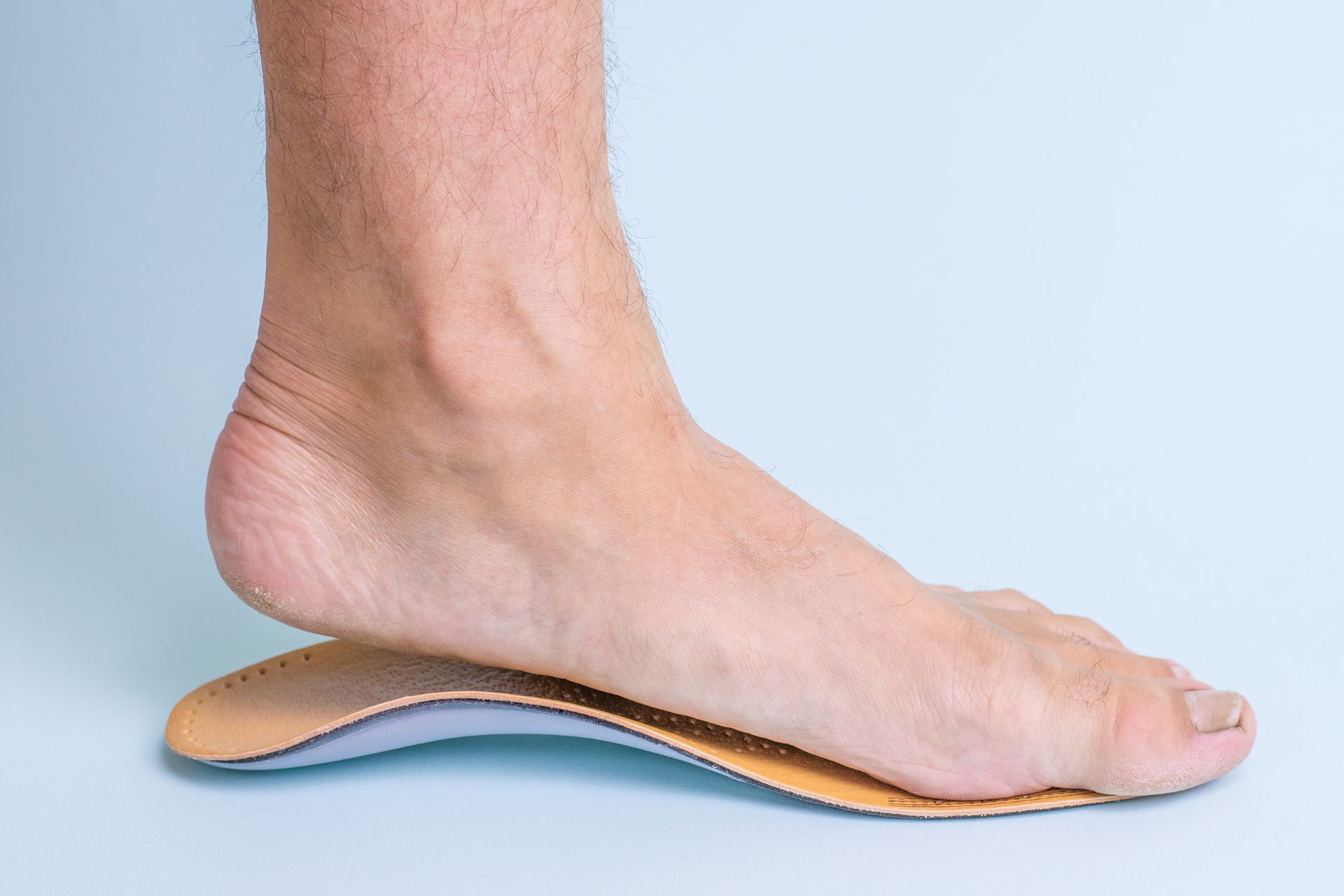Experiencing persistent ingrown toenail pain? When conservative treatments fail to provide relief, ingrown toenail surgery may be the most effective solution for long-term comfort and healing.
What Is An Ingrown Toenail?
An ingrown toenail is a painful condition that typically affects the big toe. In this condition, the nail edge digs into or penetrates the surrounding tissue, making even simple activities like walking or wearing shoes a nightmare.
Several factors contribute to ingrown toenails. Trauma to the toe or nail, poor nail trimming, ill-fitting footwear, and anatomical deformities can all cause this painful condition. For example, cutting your toenails too short or rounding the edges can, unfortunately, encourage the nail to grow into the skin. Wearing tight shoes that crowd the toes can also increase the chances of an ingrown toenail. If left untreated, ingrown toenails can lead to severe complications, including tissue hypertrophy, permanent changes to the tissue, and infection.
The good news is that minor ingrown toenails can sometimes resolve on their own as the ingrown nail grows out. However, in some cases, the ingrown toenail becomes infected or problematic and requires surgery. Recognising the symptoms early and addressing the ingrown toenail before it worsens and causes pain.
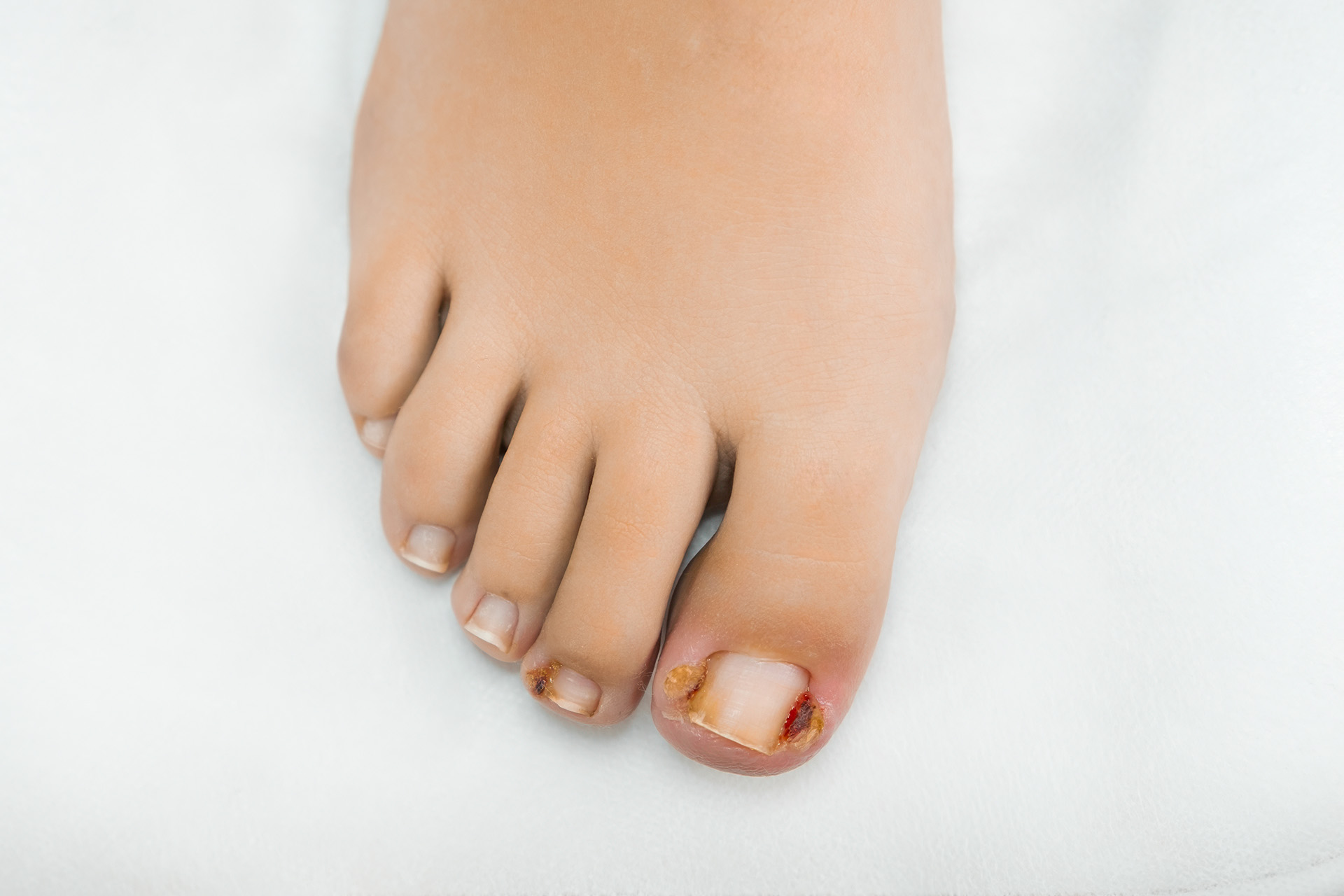
Symptoms of Ingrown Toenails
Pain is usually the first and most noticeable symptom of an ingrown toenail. This painful condition makes walking, standing or wearing certain types of shoes. The pain is usually localised to the area where the nail is digging into the skin, around the big toe. As the condition worsens, the pain becomes more intense.
In addition to pain, other symptoms include inflammation, swelling, and redness around the nail folds. These symptoms mean the ingrown toenail is getting worse and could lead to infection. The skin around the affected toe may also feel hard or develop a bump, another sign of an ingrown toenail. If left untreated, an ingrown toenail can create a pathway for bacteria to enter and cause more severe infections. You may see pus drainage, a clear sign that the area is infected and needs attention.
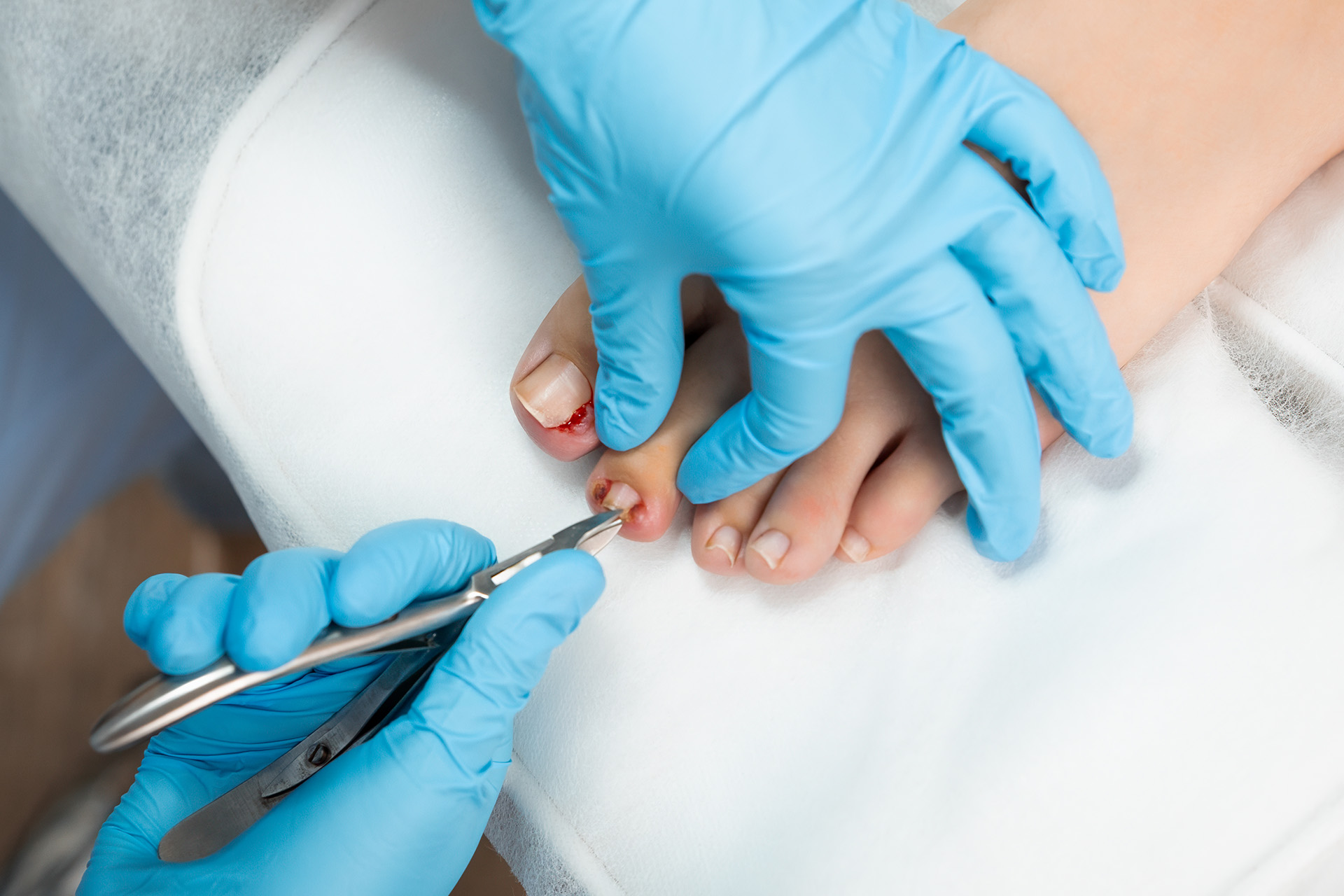
Diagnosis and Initial Assessment
A physical exam is all that is required to diagnose an ingrown toenail, which presents distinct symptoms like tissue inflammation, redness around the nail bed, and sometimes pus. These signs help a healthcare provider assess the severity of your ingrown toenail and decide on the best course of treatment. This is usually quick, as additional testing isn’t usually needed.
When assessing an ingrown toenail during diagnosis, a podiatrist will classify it into one of three stages based on visual symptoms and how the surrounding tissue has reacted. Get an early diagnosis and start treatment quickly to avoid the necessity of surgery and promote healthy toenail growth. Your podiatrist can also offer many non-surgical interventions to relieve ingrown toenail discomfort and aid in its recovery.
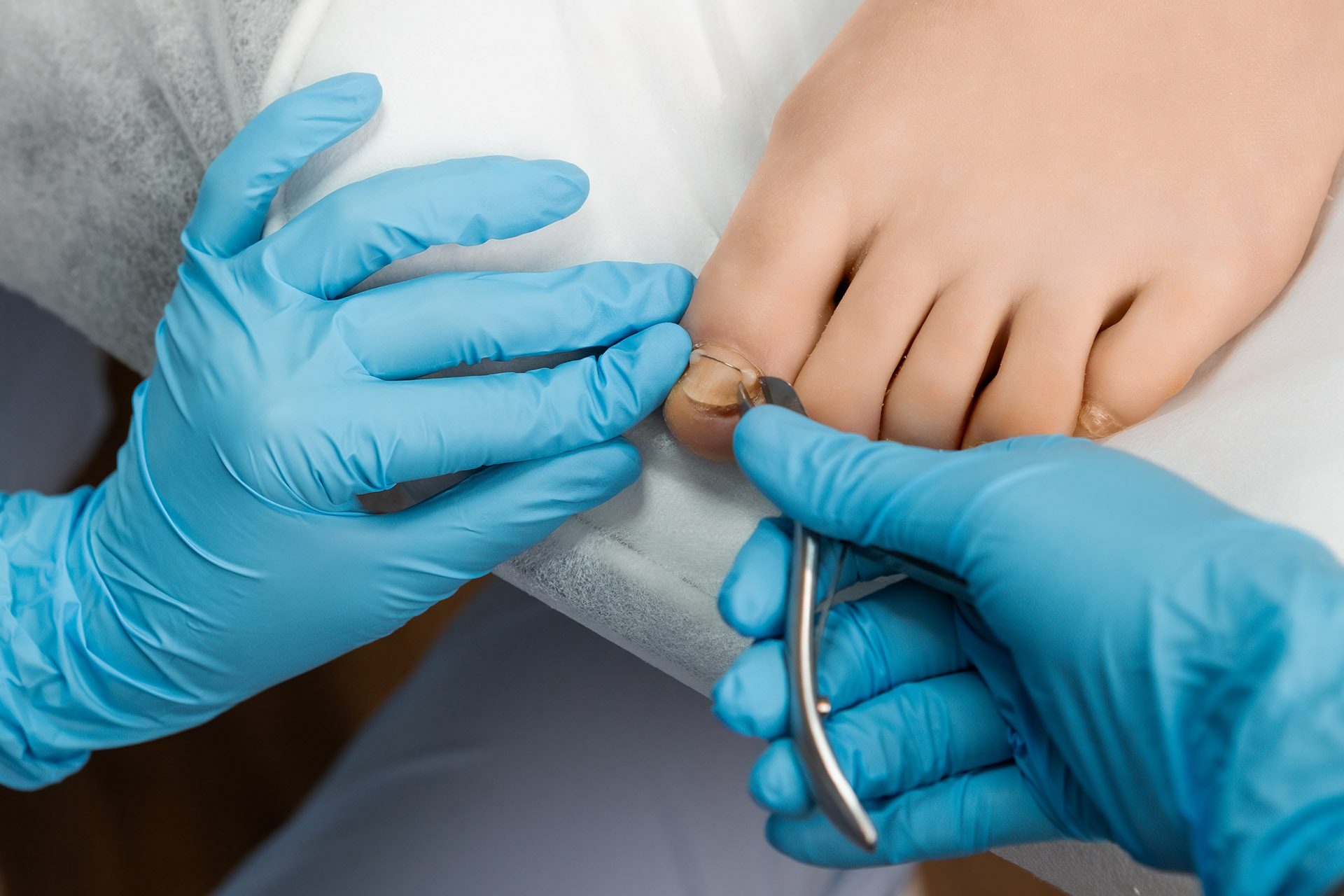
Non-Surgical Treatments for Ingrown Toenails
When dealing with an ingrown toenail, non-surgical treatments are the first line of defence. These treatments aim to grow the toenail beyond the nail groove. One of the simplest and most effective way is to soak the affected foot in warm soapy water multiple times a day. This will reduce swelling and soften the skin around the ingrown toenail.
Proper nail trimming is key in preventing and treating ingrown toenails. Incorrect techniques like rounding the corners of the toenail can cause ingrown nails. Trim your toenails straight across and maintain a straight nail edge to stop the nail from growing into the skin. Place cotton or dental floss under the nail to help it grow above the skin’s edge. Wearing open-toed shoes or sandals during the painful period can also relieve pressure on the affected toe.
Pain relief can be achieved with over-the-counter meds like acetaminophen or ibuprofen. Professional management of ingrown toenails is key to preventing serious complications, including infections that can spread to soft tissues and bones. Getting treatment on time can reduce the risk of chronic pain and recurring infections. When non-surgical treatments fail, surgery is necessary to address the issue.
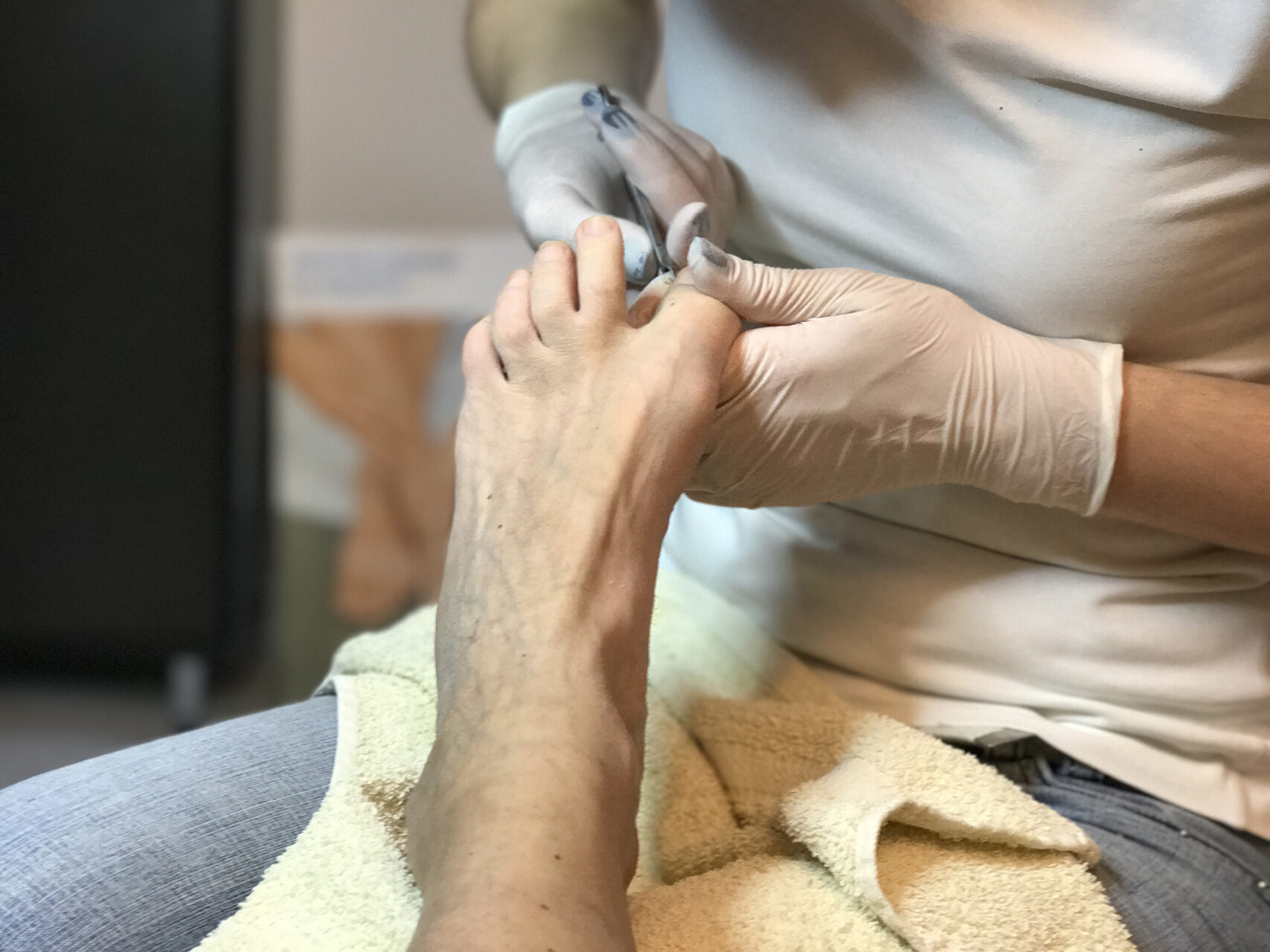
When Surgery Is Required
When an ingrown toenail is persistent or severe, ingrown toenail surgery may be needed to relieve ongoing pain and avoid repeated infections. Surgery may be necessary when there is constant pain, recurrent issues with the toenail or thickening of tissue around it to prevent complications and promote healing.
The surgical approach will depend on how severe the ingrown toenail is. Total nail avulsion may be recommended for cases where significant damage to the nail or both sides of the toenail is affected. For less severe cases, partial nail avulsion may be enough. Knowing what these toe surgeries are will help you make informed decisions about your care.
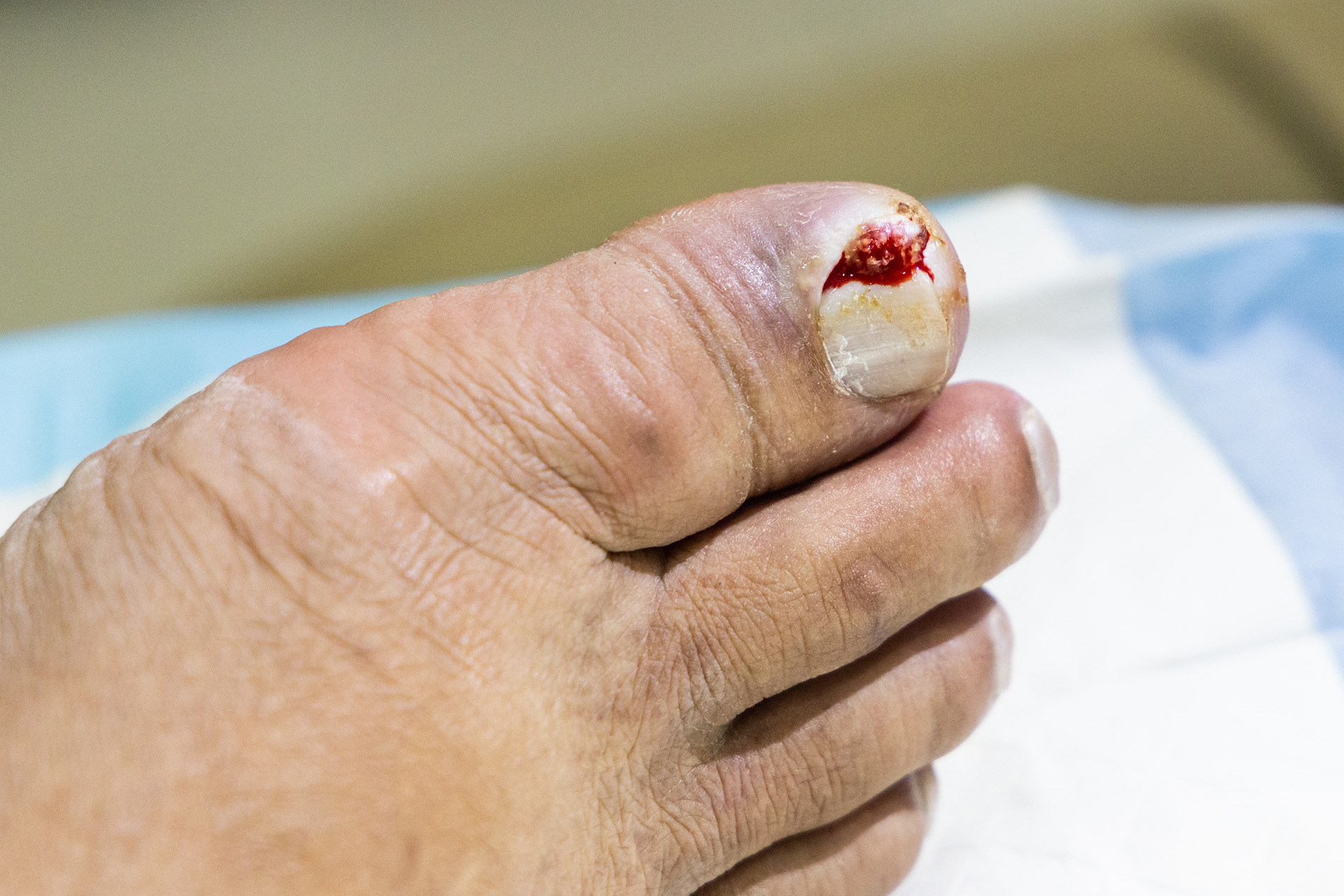
Types of Ingrown Toenail Surgeries
Ingrown toenail surgeries for nails can be divided into two main categories: those that alter the nail plate and those that reduce adjacent soft tissue. The type of surgery for an ingrown toenail will depend on how severe it is and will be tailored to the individual patient. These surgical options include total nail avulsion, where the entire nail and its germinal matrix are removed, and wedge resection for a toenail to alleviate pressure and irritation by excising a tissue segment.
These procedures are performed under local anesthesia in a clinic setting, ensuring minimal discomfort during intervention. Note that recurrence is still possible after a simple or wedge avulsion.
Knowing what partial or total nail avulsion and nail wedge resection mean will help you make informed decisions about your health care choices for ingrown toenails. Now, let’s get into how ingrown toenails are removed.
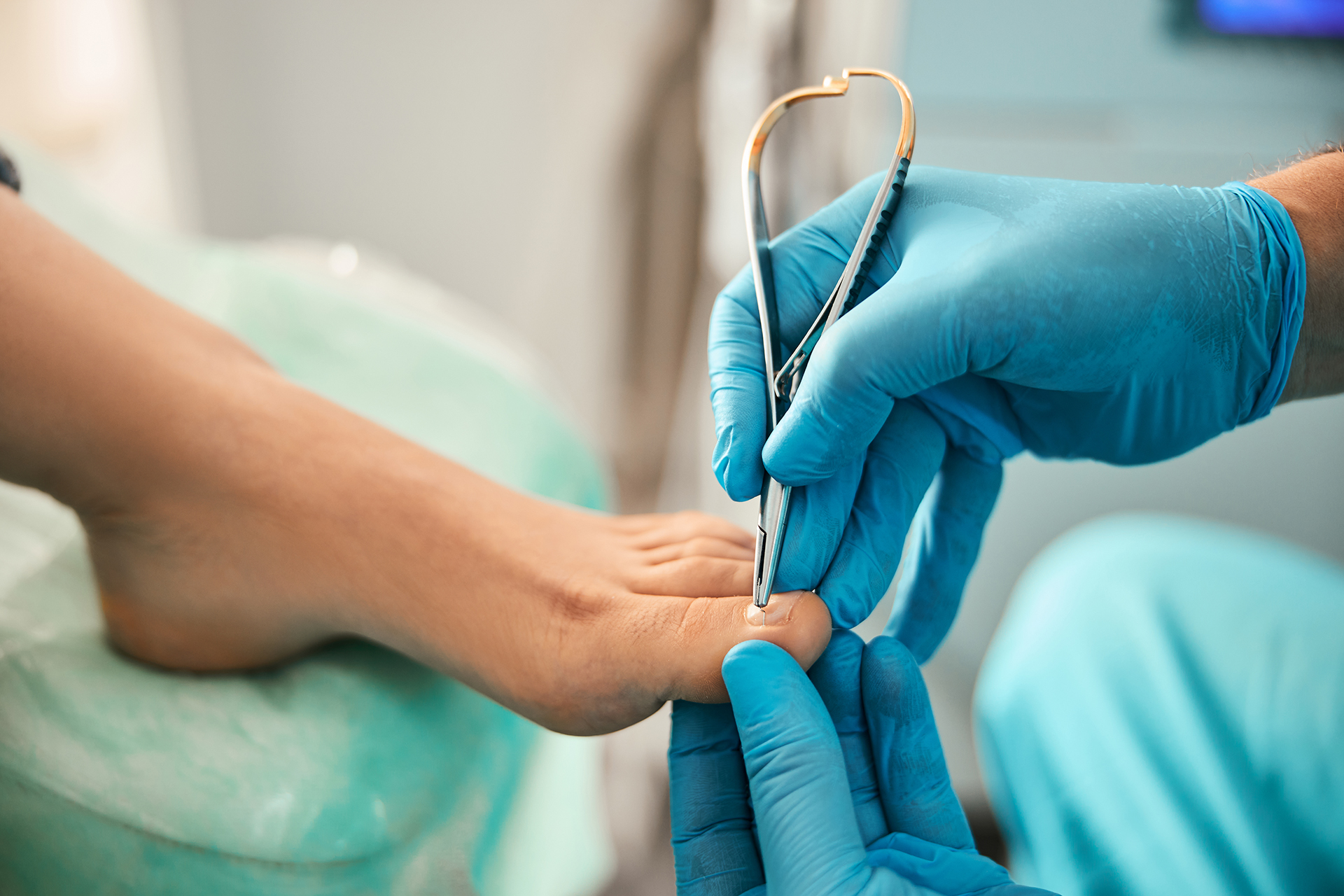
Partial Nail Avulsion
Under local anesthesia, a partial nail avulsion is a partial toenail removal. This surgery is designed to relieve pressure and reduce the chances of ingrown toenails recurring. During this procedure, removing a segment of the toenail and the underlying nail matrix is standard. Proper wound healing involves post-surgical steps such as applying pressure after tourniquet release and cauterisation for any bleeding points. This is especially good for people with mild to moderate ingrown toenails.
Total nail avulsion is an escalated approach if surgical intervention beyond partial removal is needed. Here is how this removal of ingrown toenail is done.
Total Nail Avulsion
Total nail avulsion involves removing the entire toenail from its attachment to the surrounding skin. This is usually required for severe damage to the toenail or affliction on both sides, where ingrown toenail extraction is necessary for long-term health.
A common and effective method for treating ingrown toenails following a total nail avulsion, especially when conservative treatments have failed, is a chemical matricectomy. Using a chemical, most commonly phenol, a matricectomy destroys the nail matrix, which is the area where the nail grows, helping to inhibit future growth.
Wedge Resection
Wedge resection is another surgical approach designed to reduce pressure and discomfort from ingrown nails. It involves cutting out a pie-shaped piece of tissue from both sides of the nail, without matricectomy. The goal is to excise a tissue segment to alleviate pressure and discomfort from the ingrown toenail. In this procedure, knots are used post-excision to lift the edge of the nail by suturing soft tissues around it.
Wedge resection with phenolisation can be effective for moderate to severe cases. It involves partial nail removal and uses chemicals to destroy the base permanently, preventing future growth. This technique is a balance between being thorough and not being too aggressive.
Post-Surgical Care and Recovery
Proper post-surgical care is important for wound healing and preventing complications after ingrown toenail surgery. Immediately after surgery, keeping the dressing dry and clean is important to avoid infections. Managing pain with prescribed medications can ensure comfort during the recovery period. Wearing well-fitting shoes after the initial recovery period can prevent ingrown toenails from recurring.
Soaking the affected foot in a warm, saline solution daily for the first week after the operation can help heal and reduce the chance of infection. Over-the-counter pain relievers such as paracetamol or ibuprofen are usually effective in managing pain after ingrown toenail surgery. Full tissue recovery may take several weeks, and infections may arise within days after the procedure.
Don’t tamper with your toenails or pick at the surrounding skin; that can compromise their natural defence against conditions like an ingrown nail. Seeking advice from a podiatric specialist can give you valuable insight into preventive measures and treatment options for existing or potential cases of an infected toe.
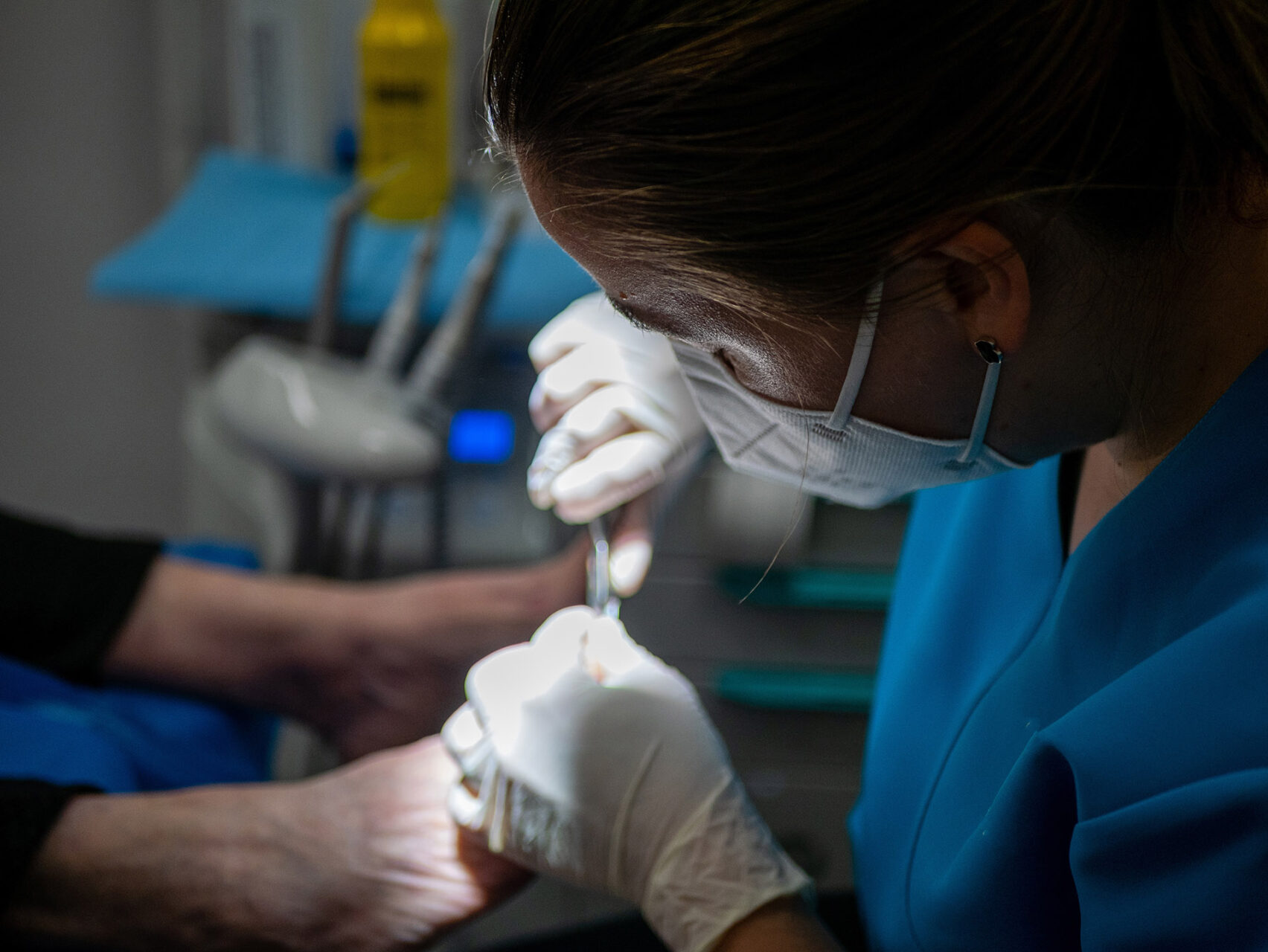
Management of Ingrown Toenail at The Foot Practice
If you’re suffering from an ingrown toenail, don’t wait until the pain gets worse. At The Foot Practice, we have personalised solutions for you. Our team is dedicated to providing high-quality care and effective interventions so you can walk and move without pain.
Take control of your foot health today and make informed decisions to keep your feet pain-free and healthy. Contact The Foot Practice today to find out more about ingrown toenail surgery.

